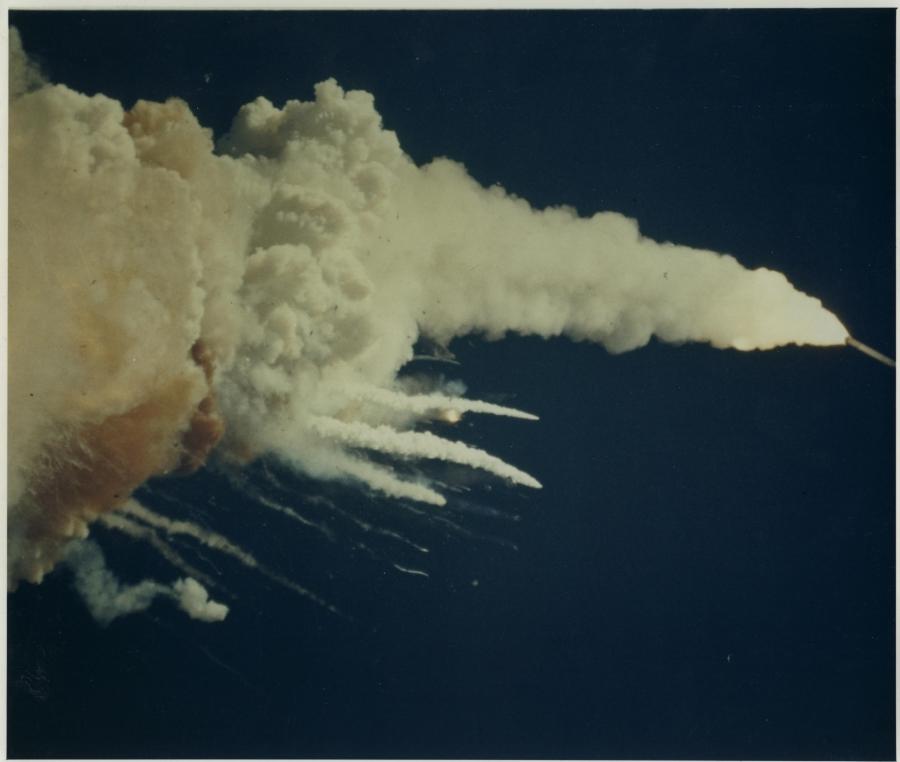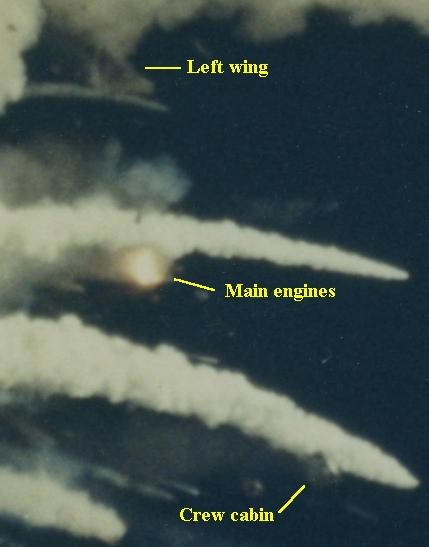
| This photograph was taken 77.361 seconds after launch, 4.148 seconds after the breakup started and 0.566 seconds after the previous image. |

 |
This image reveals more identifiable pieces of debris from the disintegrated shuttle emerging from the vapor cloud. The detached left wing and main engine cluster bear witness to the aerodynamic forces that blasted the shuttle apart. Once the crew cabin, which is about to cross the nose section's contrail in this picture, had pulled away from the rest of the shuttle, the cargo bay was suddenly exposed to an almost 2,000 mile per hour supersonic wind. The pressure from the resulting influx of air blew apart the rest of the shuttle from the inside out. The main engines, still burning here, had actually started shutting down in the milliseconds before the breakup due to fuel deprivation as a result of the massive fuel leak from the external tank, which had been caused by the 6,000 degree flame spouting from the right SRB's failed aft field joint o-ring seal. Even if Challenger had managed to stay intact until SRB separation two minutes and seven seconds after liftoff, Commander Dick Scobee and Pilot Michael Smith would have faced the almost-impossible task of guiding the shuttle to a "return to launch site" emergency landing or, more likely, an ocean ditching with no engine power. |